Potted Lavender. How to Take Care of a Lavender Plant?
Lavender is an exceptionally beautiful plant with many useful qualities. It can be found in many gardens, astonishing with its intense color. Lavender has been valued for many years not only for its beautiful color but also strong fragrance. It is also easy to grow and not too problematic. As it turns out, you don't have to own a garden to benefit from this plant. If your space is limited, potted lavender is a perfect solution for you. Are you wondering how to take care of it? We know tricks that will make your lavender a truly stunning decoration.

What are the characteristics of lavender?
Lavender is a shrub belonging to lamiaceae, mint family. It is both decorative and cultivated plant. Lavender typically reaches half a metre, however there are also higher species. Its characteristic feature is purple, sometimes blue flowers, growing vertically. They release a slightly camphoric scent. Lavender is valued for its health benefits. The plant is also used in perfume industry and for culinary purposes.
The valuable parts are flowers, usually in dried form. They are also used for essential oil production. It has antiseptic purposes.
Lavender has many other purposes that might be appreciated by every woman. In the age of natural cosmetics lavender becomes more and more appreciated. It hinders skin sebum production, therefore it is perfect for oily and combination skin. It’s a great help for acne and pimples, as well as skin discoloration.
If you grow lavender in your garden or as a potted plant on the balcony, you can make your own skin products.
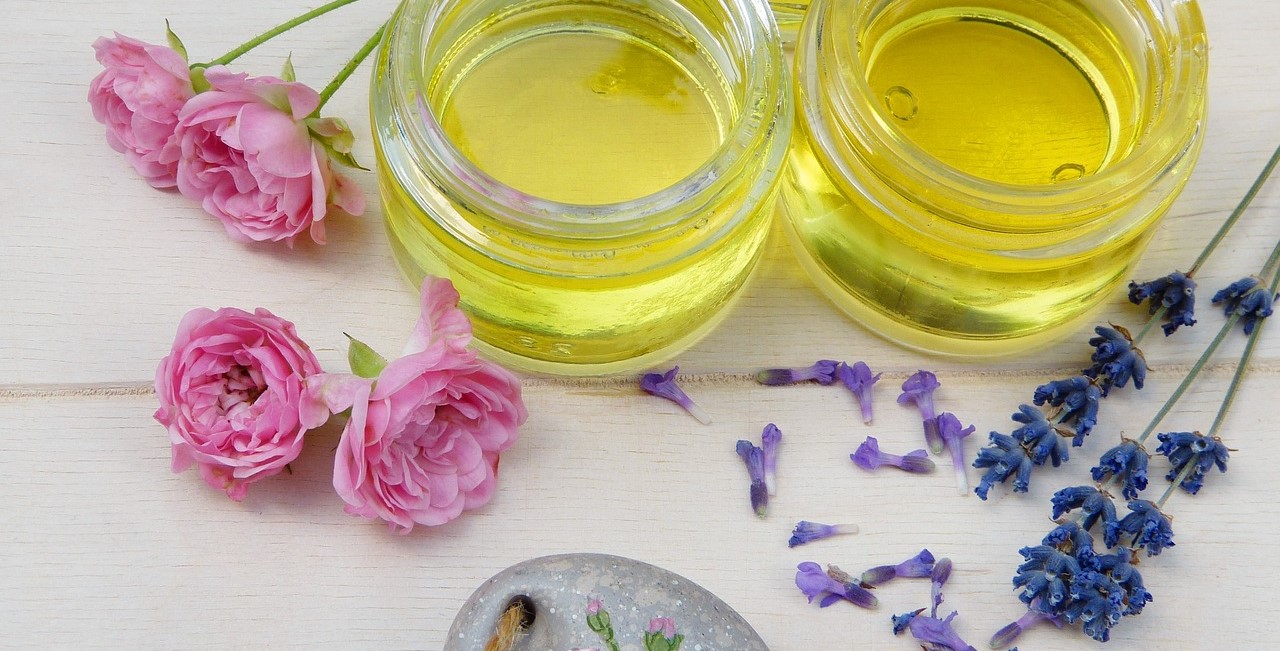
Lavender has a soothing effect on human nervous system. It is also a good stimulant in case of mental fatigue. Drunk as a herbal tea or added to various dishes, lavender stimulates digestive system and relaxes muscles. It also soothes pain.
Considering those features, as well as its beautiful form, lavender is worth having at your home. You can grow it in your garden, on a balcony or in the kitchen. Lavender in a pot is not too difficult to grow. You only need to remember about a few principles to make your plant healthy and good looking.
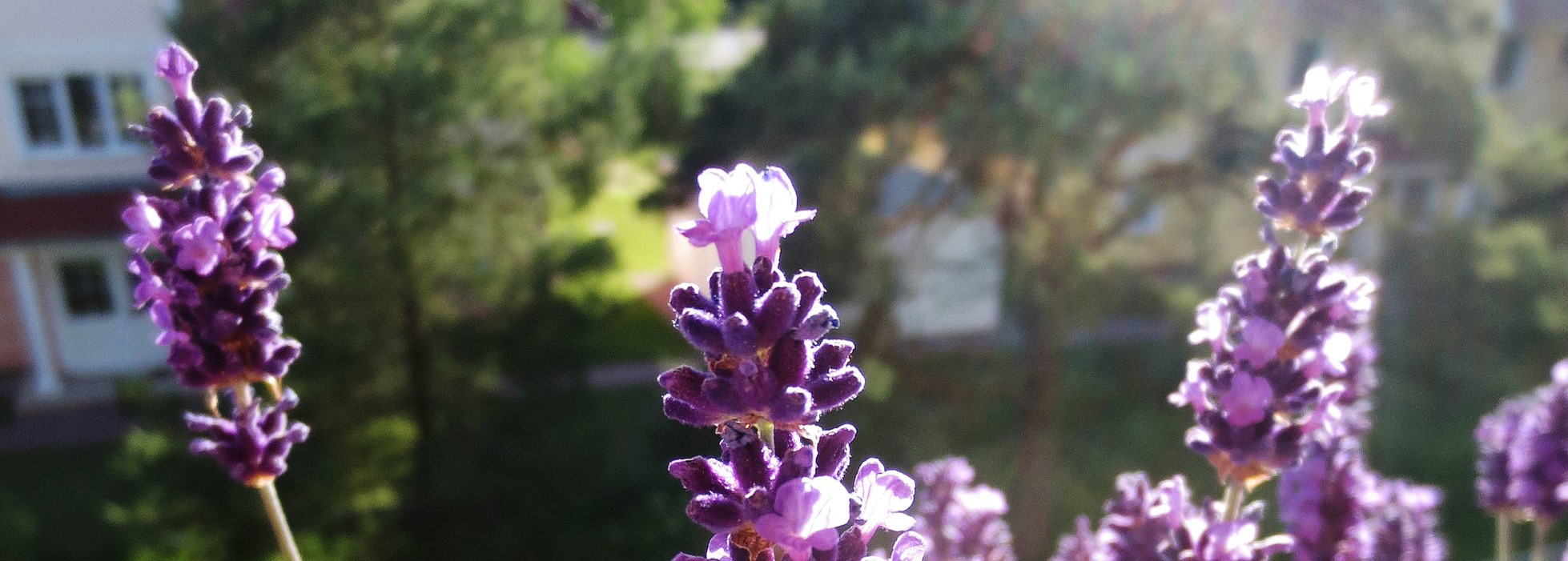
Lavender in a pot – what should you know about it?
Lavender in a pot is perfect for anyone who wants to enjoy this plant on their balcony. You can decide to buy a seedling or seed it yourself. The latter method requires significantly more attention, as the seeds need to undergo stratification. It is nothing else than cooling the seeds, which should last approximately three weeks.
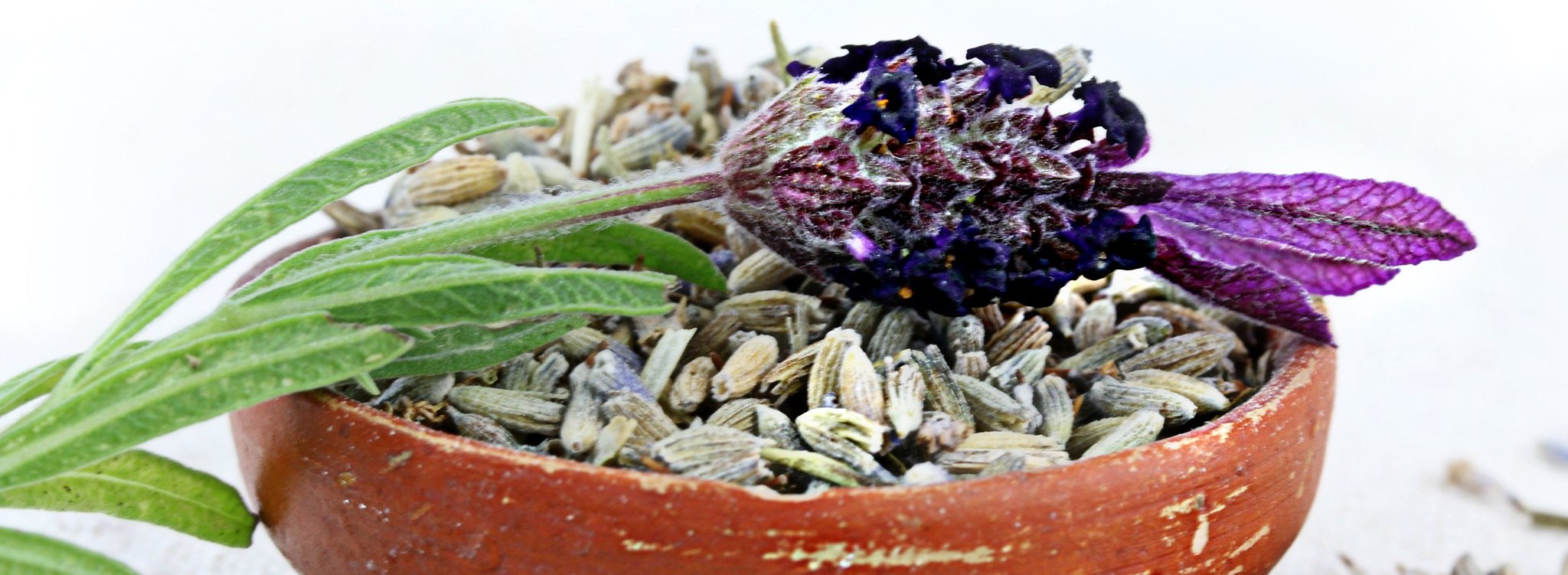
The best time for lavender seeds stratification is February. How to do it? Prepare a small container and fill it with soil. Plant the seeds and put the container in a room in which the temperature remains around 0°C (32 F) – for instance basement. You can also cool the lavender seeds in the fridge – it’s a definitely more convenient method. This way you don’t have to worry about ground frosts.
Growing a lavender plant at home is not a very difficult task. The plant does not need too much attention. Well planted, lavender will serve as a decoration for many years. There are many lavender species, and most of them can be potted. Plants that are not resistant to frost are perfect for this purpose.
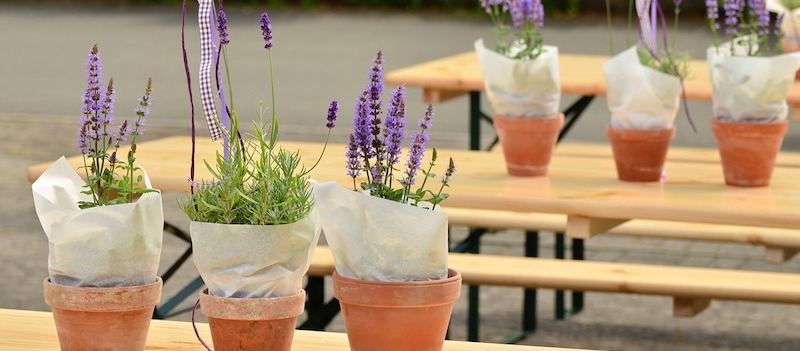
Growing lavender at home – species
One of the most common types of lavender is English lavender. It is highly resistant to low temperatures and frost. Most of lavender plants are suitable to grow in a pot, especially those that won’t survive in low temperatures. When choosing a plant, remember that various types reach different heights. There are around 30 different species of lavender.
The most popular types are:
- English lavender – also known as true lavender. It is frost resistant, therefore it can survive difficult conditions of cold climates. It can reach up to 1 metre. English lavender flowers have various colours - from white to dark purple.
- French lavender – the species is less resistant to low temperatures. It can survive up to -7 Celsius degrees, therefore in cold regions it is an annual plant. French lavender flowers are more impressive than English lavender. The petals of the flowers stick out, resembling butterfly wings. Because of a high amount of oils the plant is not used for cooking.
- Spanish lavender – known also as a different type of French lavender. Flowers are white, purple or blue. The plant is not edible. It is vulnerable to low temperatures therefore in cold regions it is grown in pots.
- Broadleaved lavender – similar to English lavender, this species can survive very low temperatures. It has a heavier scent, its flowers are used in production of a strong essential oil.
- Lavender x intermedia – it’s a hybrid between English lavender and broadleaved lavender. Its leaves have a beautiful silvery-green colour. The flowers are purple. The plant can grow up to 60 cm.
Lavender blooms between June and September. The blooming times might vary – it depends on various factors. Most of the species have evergreen leaves.

How to plant a lavender in a pot?
Regardless of the type of your plant, all species have similar requirements. Potted lavender needs more attention than the one growing directly in soil, as it has less space to grow.
Lavender plant should grow in a big container. It is advised to use ceramic pots, as they allow water to naturally evaporate. With plastic containers there is risk that water will stay inside. Make sure to put a drainage layer at the bottom of the planter, along with drain holes. Lavender does not tolerate excessive wetness. The best soil for a lavender plant is dry, lightweight, rich in calcium and alkaline or neutral. You can use universal potting soil mixed with sand in 1:1 proportions or buy a special lavender soil in a flower shop. After planting a new plant cover its roots with additional layer of soil.
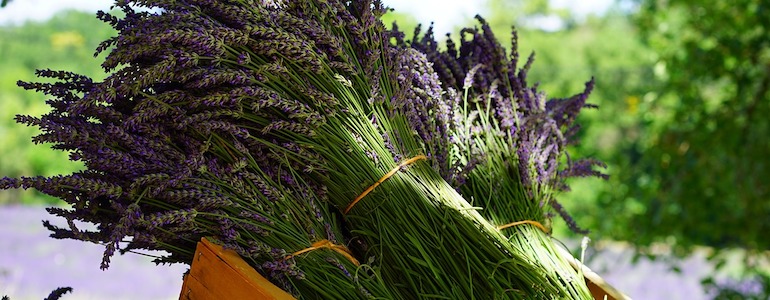
Lavender in a pot grows best in sunny spots - choose windows facing south and west. The plant likes wind, so don’t worry if the place is draughty. In summer you can place the pot on a balcony or on a patio.
You can also try to seed the plant. The seeds need to be stratified first (for around two months). To do this, you might mix them with sand, put them in a fridge, and plant them in spring. The young plants bloom after a year. Their colours might differ from the parent plant.
Lavender plant care guide
Lavender is a plant that does not like to stand in shade. Excessive wetness is also not good for it. Water it 1-2 times a week. Make sure not to overwater the lavender, or it might stop growing. It is better to leave the soil to dry a little instead - although do not let it dry completely. Fertilise the soil every two weeks from April to July. A liquid fertilizer is best for this purpose.
Lavender needs pruning. Do it approximately twice a year to keep the good look of the plant. Such procedure also prolongs blooming time. While you can cut up to half the length, it is best to cut back 2/3 of a branch.
Lavender also needs to hibernate. For this purpose move the plant to a room with lower temperature. Don’t forget to water it, otherwise the plant will die. Lavender is not very popular among vermins – its strong smell works as a natural repellent. The plant can be transplanted into a new spot after it stops blooming.
The only disease that may attack a lavender plant is botrytis (a type of fungus). It will occur if the plant is overwatered. To prevent it, don’t let the roots soak too much. Pour the water out of the saucer immediately, so that it is not sucked back into the soil.
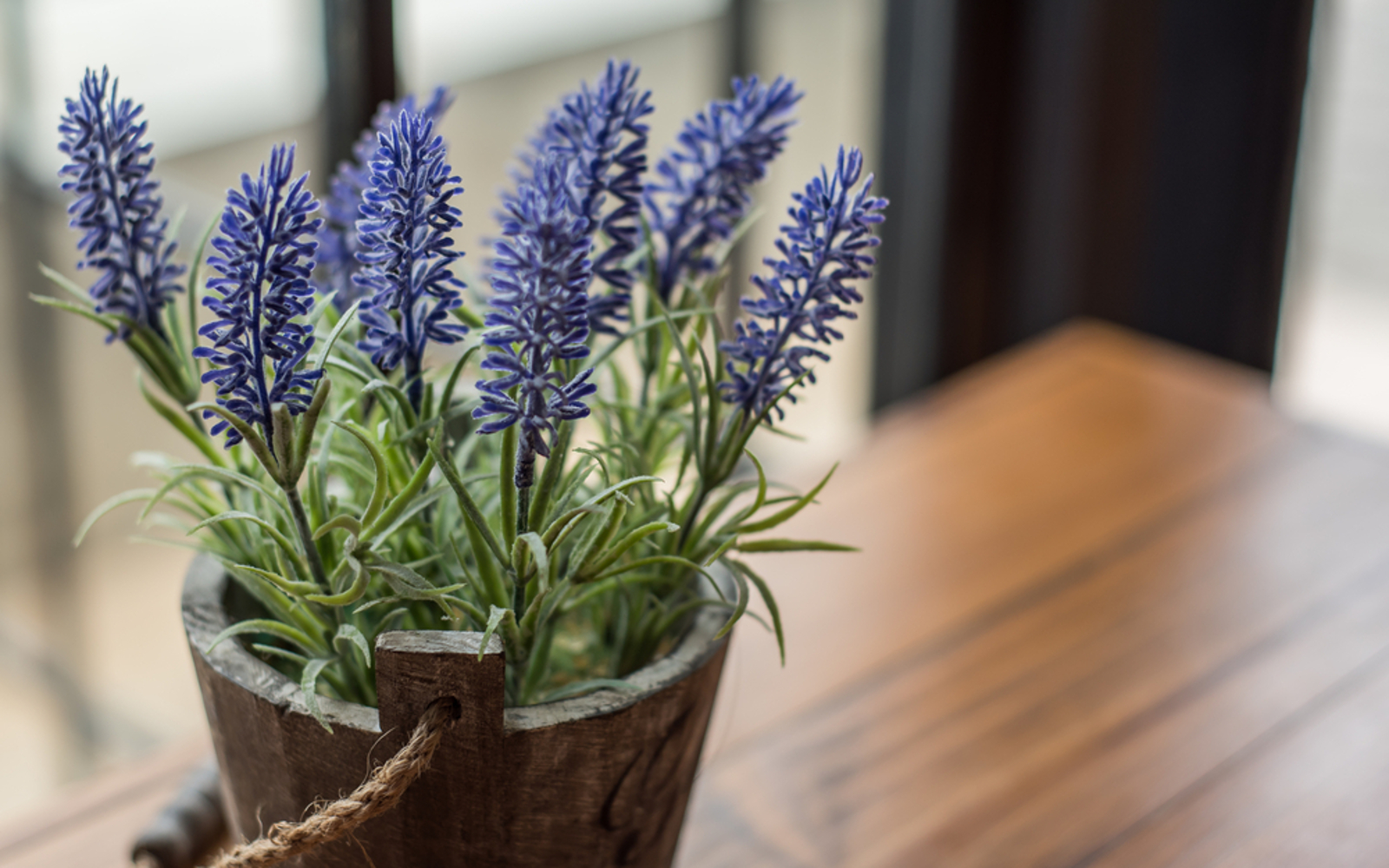
Lavender at home – example arrangements
You can plant a lavender individually or in groups – just make sure your container is large enough. The plant looks very good and therefore is a decoration itself. You can also combine it with other species of balcony plants. Choose plants of similar requirements.
Species that can grow with lavender in one pot are:
- sages,
- calendulae,
- tickseeds,
- pinks.
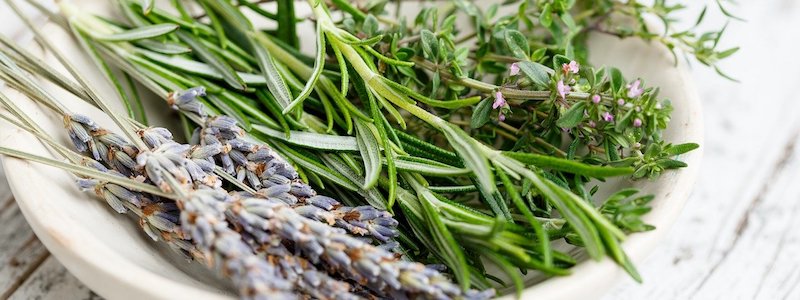
Lavender should be combined with flowers of delicate colours that won’t overwhelm it. A good idea is to make a composition with Herbes de Provence. It is a perfect arrangement for the kitchen – it can serve both as decoration and indoor herb garden.
Lavender fits best in rustic style interior designs. Choose interesting containers for it - for instance colourful ceramic pots. You can also use metal buckets or even an old watering can.
How to use lavender?
Lavender has a lot of properties. For this reason the plant is definitely worth having. There are many ways in which you can use lavender flowers. See those listed below:
- Insect repellent - insects, e.g. mosquitoes hate the strong scent of lavender. You can put dried flowers in small cotton or linen packets and hang them wherever it’s needed, for instance in a bedroom. It is also a good remedy for moths - just put one of the packets somewhere in your wardrobe.
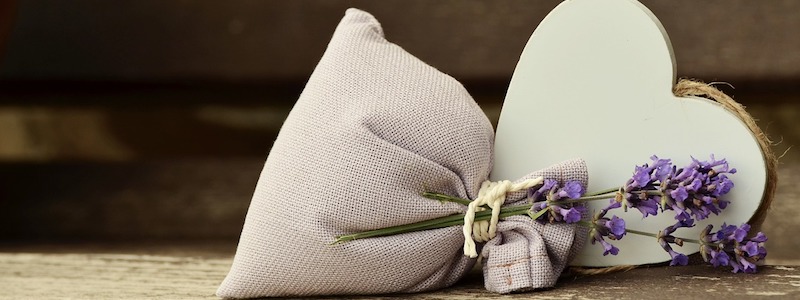
- Headache remedy – lavender aroma is soothing and relaxing. You can put some freshly cut lavender flowers in a vase in your bedroom. You can also put a packet with dried flowers under your pillow - it will help you fall asleep.
- Seasoning – lavender sometimes is included in a popular seasoning mix - Herbes de Provence. You can use the plant to season many dishes, especially poultry. Be careful though – lavender has a strong aroma. If you overuse it, it will kill the taste of the whole dish. You can also add flowers to desserts and ice cream.
- Lavender sugar – it is very easy to prepare. Just mix some sugar with lavender flowers - fresh or dried, and put it in an airtight container for several weeks. After this time sieve the sugar to separate it from the flowers. It’s perfect for coffee, tea, cakes and cookies.
- Lavender decorations – cut and dried lavender branches are great decoration elements. You can use them to decorate candles or just bunch them and put in a vase.
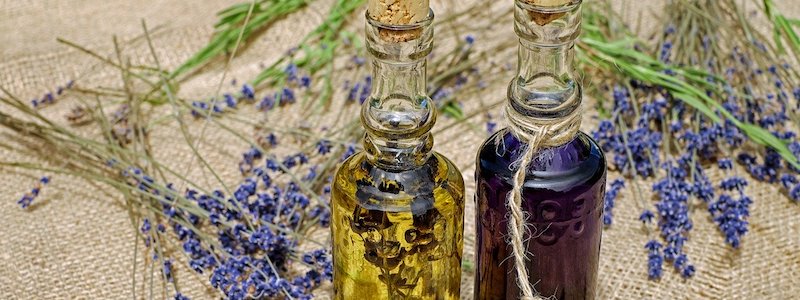
Those are only a few uses of lavender. There are obviously more ideas – just use some inspiration and your own creativity. Lavender is a remarkable plant, definitely worth keeping in your garden or at your house. There are many species of diefferent appearance to choose from. As a part of a balcony decor, the plant needs only a little attention, which is not much in comparison with the amount of the benefits it provides. Lavender in a pot is a great idea for a decoration of any interior design.
📍 How to grow lavender?
You might grow lavender in your garden, or, if you do not own one, in a container. Lavender is not difficult to grow, although the plant in a pot requires more attention.
📍 How to dry lavender?
Cut several branches and tie it in a bunch with a piece of twig. Hang it in a dry and warm place.
📍 When does lavender bloom?
Lavender blooms between June and late September. The time might differ, depending on weather conditions.
📍 When to plant lavender?
You can plant lavender throughout the whole season, since the beginning of April until the end of September. You can transplant lavender after the flowers stop blooming, on early spring or early autumn.
Featured articles




